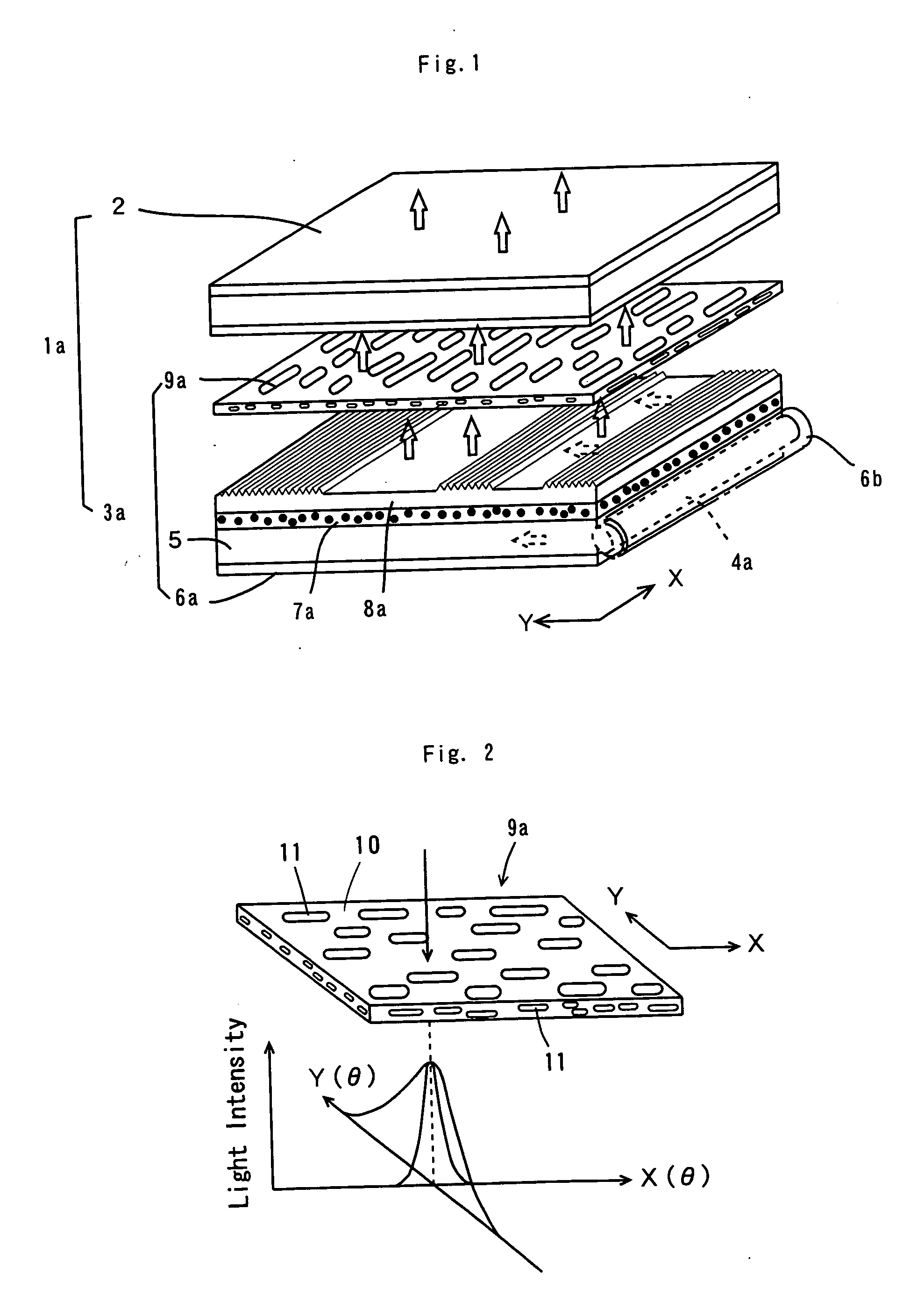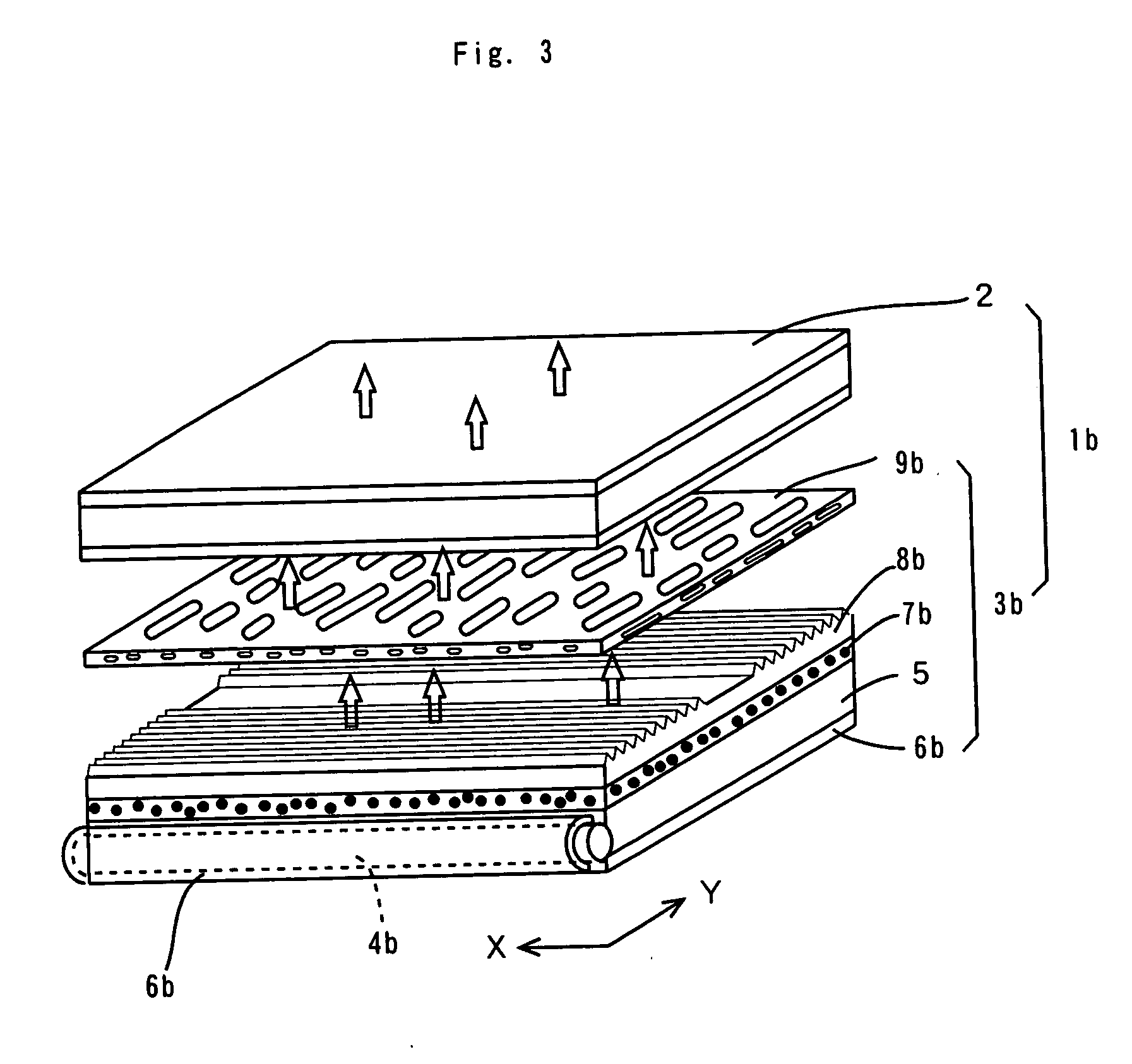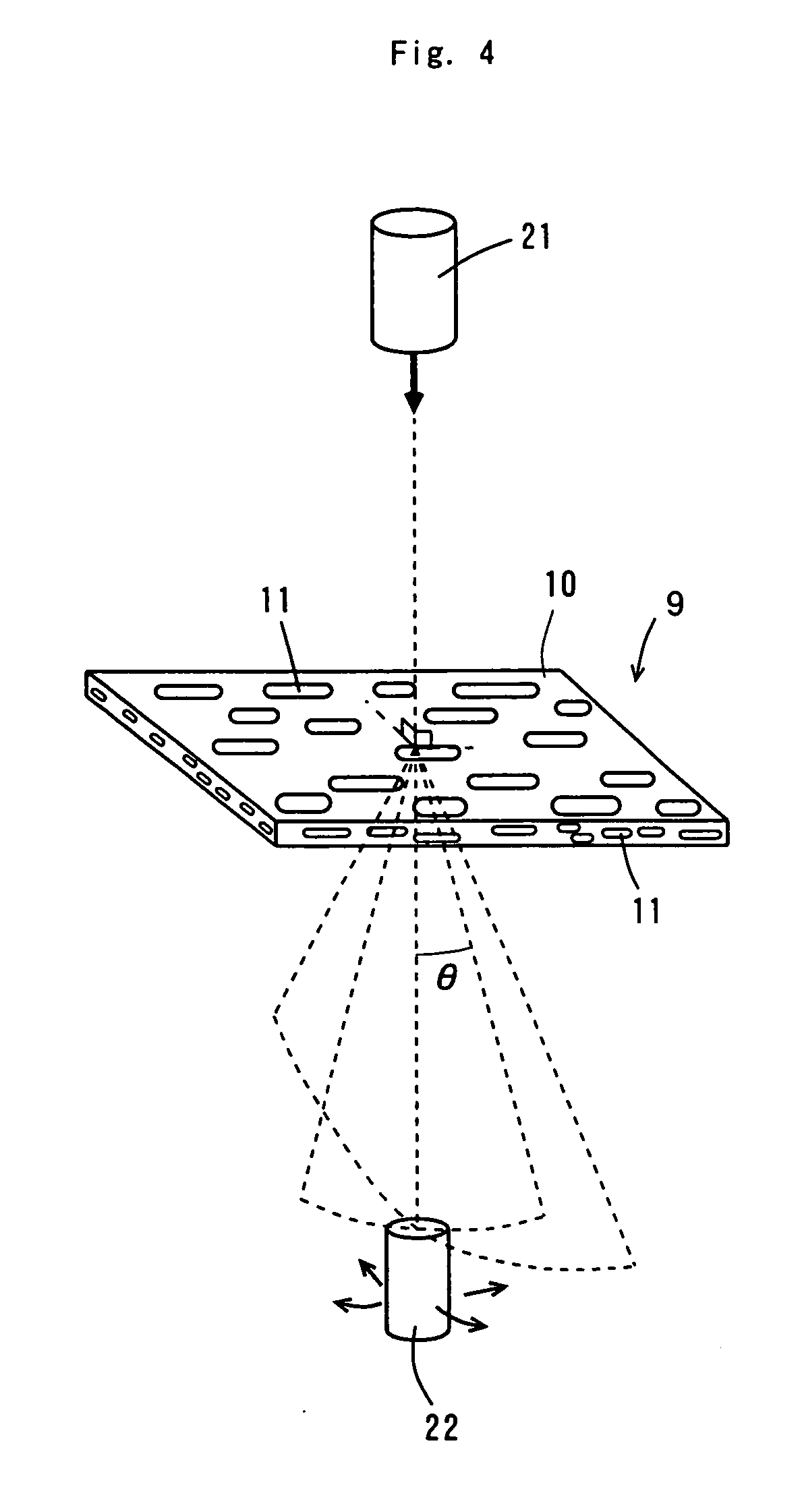Anisotropic scattering sheet
a scattering sheet and anisotropic technology, applied in the direction of optics, thin material processing, instruments, etc., can solve the problems of inability to uniformly illuminate the display panel with the high luminance, and the distribution is not as uniform as desired, so as to achieve a stable use over a long period of time
- Summary
- Abstract
- Description
- Claims
- Application Information
AI Technical Summary
Benefits of technology
Problems solved by technology
Method used
Image
Examples
example 1
[0207] As the continuous phase resin, 91 parts by weight of crystalline polypropylene-series resin PP (manufactured by Grand Polymer Co.; F1033, refractive index 1.503); as the dispersed phase resin, 7 parts by weight of polystyrenic resin (GPPS) (General polystyrenic resin, manufactured by Daicel Chemical Industries, Ltd.; GPPS#30, refractive index 1.589); and as the compatibilizing agent, 1 part by weight of epoxidized diene-series block copolymer resin (manufactured by Daicel Chemical Industries, Ltd.; Epofriend AT202; styrene / butadiene=70 / 30 (by weight), epoxy equivalent 750, refractive index about 1.57) were used. The refractive index difference between the continuous phase resin and the dispersed phase resin was 0.086.
[0208] The above continuous and dispersed phase resins were dried at 70° C. for about 4 hours, and the dried resins were kneaded in a Banbury mixer. Using a multi-layered type extruder, the kneaded product for forming a center or intermediate layer and the trans...
example 2
[0214] The heat resistance test was conducted for an anisotropic scattering sheet produced in the same way as Example 1 except that the sheet was heat-treated at 70° C. for 8 hours instead of heat treatment of 90° C. for 8 hours.
example 3
[0215] The anisotropic scattering sheet obtained in Example 1 was further monoaxially stretched by rolling calendering method (conditions: a temperature of 125° C., stretching factor of about 2 times (thickness reduction rate of about ½), width reduction rate of about 3%) to obtain a 90 μm-thick film. Observation of this film by TEM (dyeing with osmic acid) revealed that the dispersed phase of the center layer was shaped like a highly elongated fiber, with the mean length of major axes of about 30 μm and the mean length of minor axes of about 1.5 μm.
[0216] When the light scattering property of the obtained anisotropic scattering sheet having high anisotropy was measured in the same way as Example 1, remarkable light scattering anisotropy was observed as shown in FIG. 5. Moreover, in the light scattering properties, Fy(4°) / Fx(4°) was 8.2, Fy(10°) / Fx(10°) was about 400, and Fy(30°) / Fx(30°) was about 10000.
[0217] Then thus obtained anisotropic scattering sheet was cut into separated ...
PUM
| Property | Measurement | Unit |
|---|---|---|
| light-scattering angle | aaaaa | aaaaa |
| light-scattering angle | aaaaa | aaaaa |
| mean aspect ratio | aaaaa | aaaaa |
Abstract
Description
Claims
Application Information
 Login to View More
Login to View More - R&D
- Intellectual Property
- Life Sciences
- Materials
- Tech Scout
- Unparalleled Data Quality
- Higher Quality Content
- 60% Fewer Hallucinations
Browse by: Latest US Patents, China's latest patents, Technical Efficacy Thesaurus, Application Domain, Technology Topic, Popular Technical Reports.
© 2025 PatSnap. All rights reserved.Legal|Privacy policy|Modern Slavery Act Transparency Statement|Sitemap|About US| Contact US: help@patsnap.com



